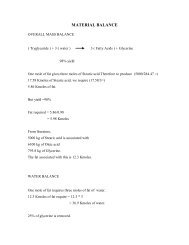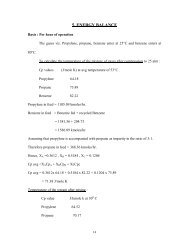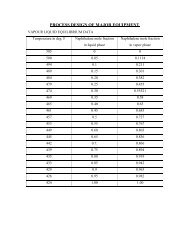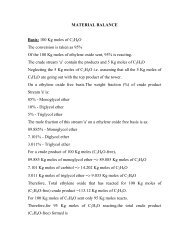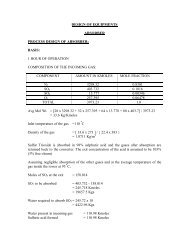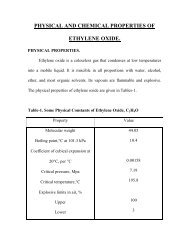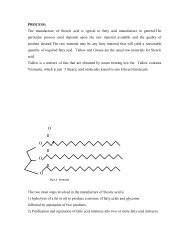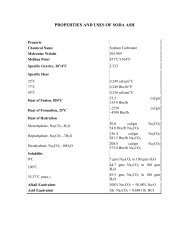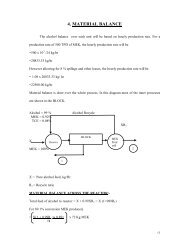MATERIAL BALANCE The beginning of any design problem is to ...
MATERIAL BALANCE The beginning of any design problem is to ...
MATERIAL BALANCE The beginning of any design problem is to ...
Create successful ePaper yourself
Turn your PDF publications into a flip-book with our unique Google optimized e-Paper software.
Material balance around the evapora<strong>to</strong>r<br />
Inputs:<br />
Monoethylene Glycol (MEG) = 1.1574 kg/s<br />
Diethylene Glycol (DEG) = 0.1982 kg/s<br />
Triethylene Glycol (TEG) = 0.0312 kg/s<br />
Water = 7.9314 kg/s<br />
Total = 9.3182 kg/s<br />
Outputs:<br />
MEG + DEG + TEG = 1.3868 kg/s<br />
(MEG = 1.1574 kg/s, DEG = 0.1982 kg/s, TEG = 0.0312 kg/s)<br />
Water (as condensate) = 6.5314 kg/s<br />
Water (as steam) = 1.3720 kg/s<br />
Water losses = 0.0280 kg/s<br />
Total = 9.3182 kg/s<br />
Material balance around the MEG column<br />
Assumption:<br />
<strong>The</strong> impurities like water, chlorides, iron etc. Which cannot be quantified or<br />
estimated are assumed <strong>to</strong> be in minute amounts (as given in the product specification) and<br />
are assumed <strong>to</strong> play no role in the d<strong>is</strong>tillation operation.<br />
Inputs:<br />
Feed : MEG + DEG + TEG = 1.3868 kg/s<br />
(MEG = 1.1574 kg/s, DEG = 0.1982 kg/s, TEG = 0.0312 kg/s)<br />
Outputs:<br />
(A)D<strong>is</strong>tillate:




